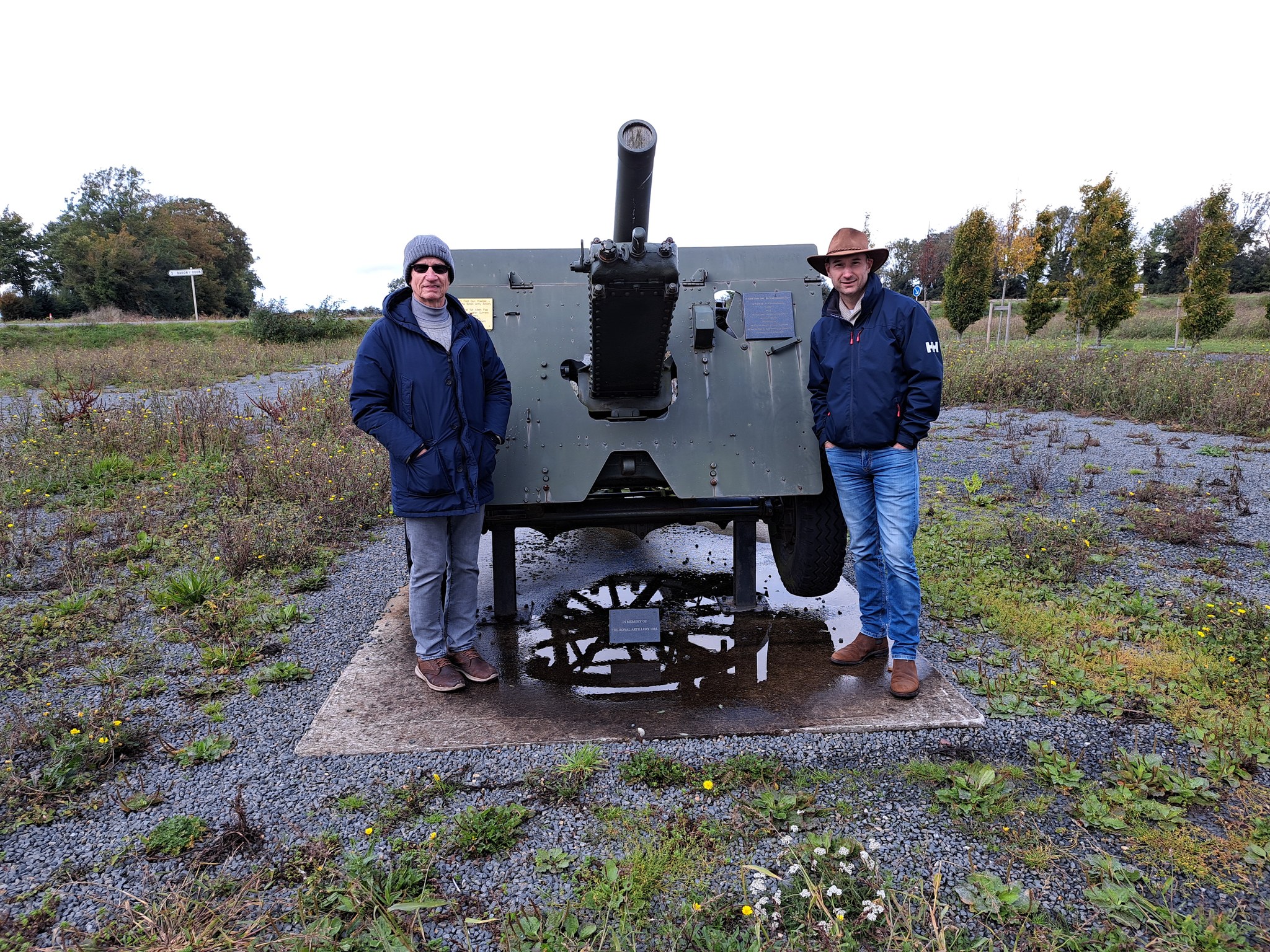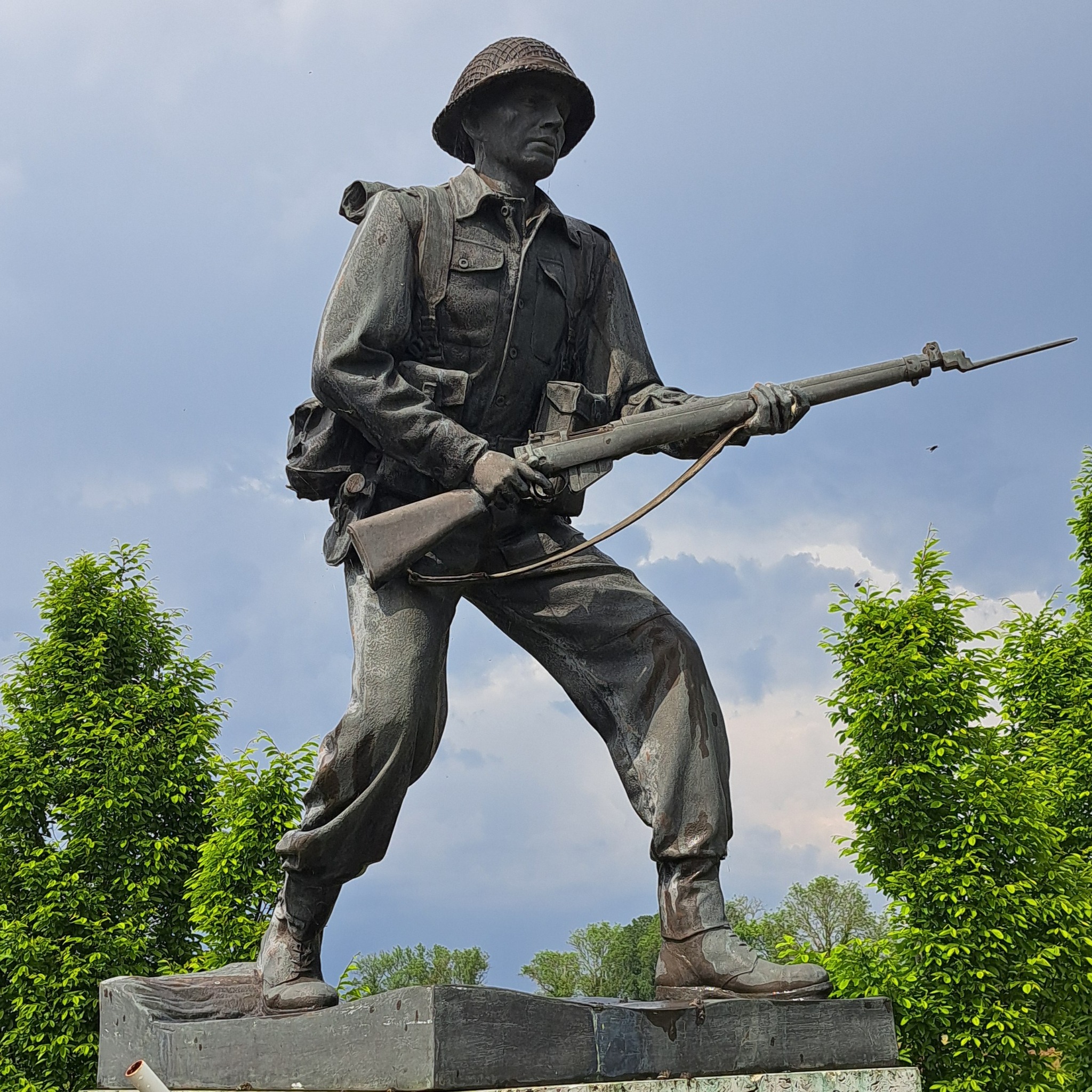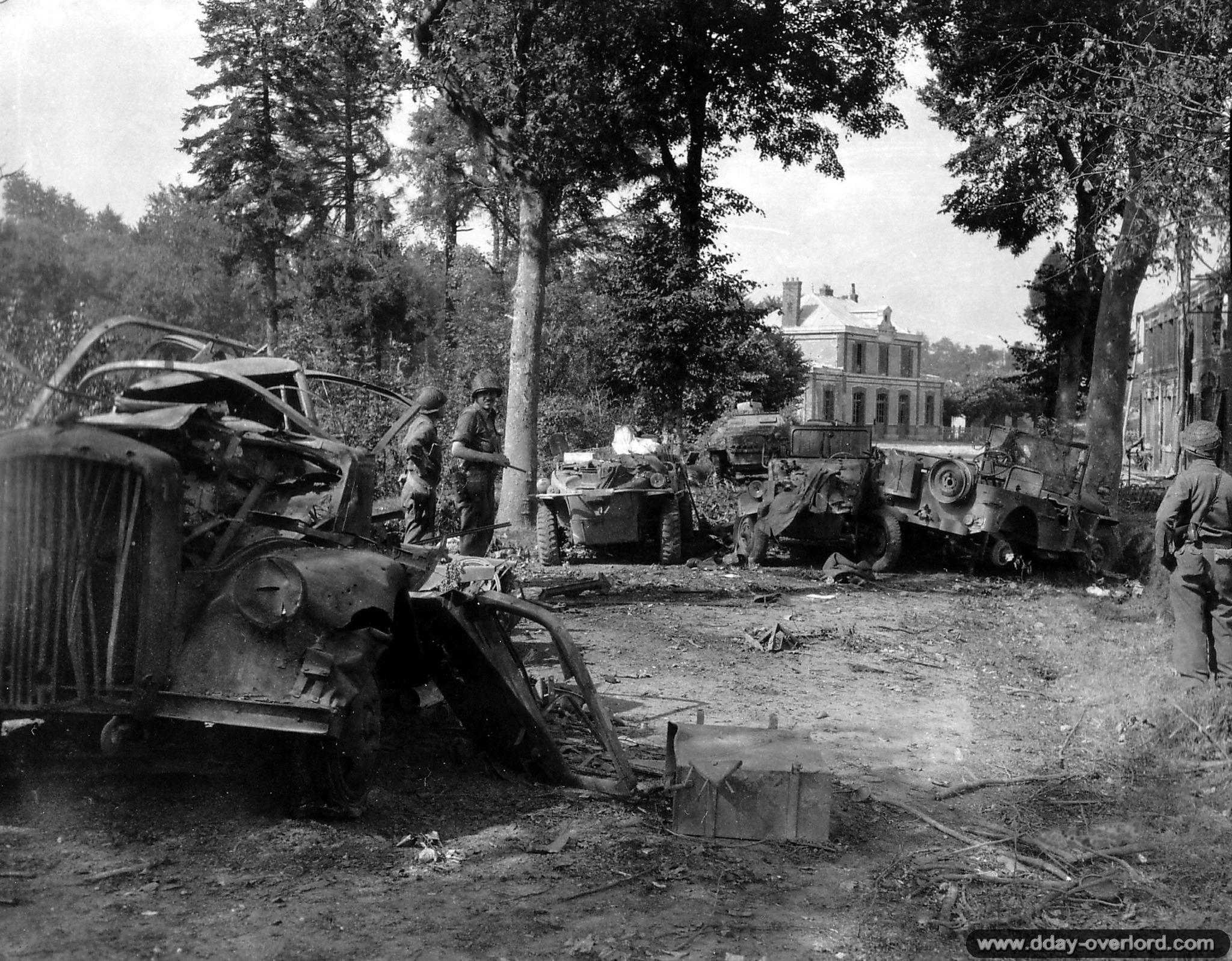
Lt Douglas Goddard Royal Artillery (later Major Douglas Goddard, MBE, FCIS.)
The 220 Battery was part of the 112th (Wessex) Field Regiment, Royal Artillery, which served with the 43rd (Wessex) Infantry Division during the Normandy campaign in 1944. The regiment comprised three batteries: the 217, 220 (Wiltshire), and 477.
Landing in Normandy:
The 43rd (Wessex) Infantry Division began disembarking in Normandy on 24 June 1944, with the bulk of the division concentrated north of Bayeux by that date.
Operation Epsom (26–30 June 1944):
During Operation Epsom, the 43rd Division’s role was to follow the 15th (Scottish) Division’s advance and secure the captured objectives in the ‘Scottish Corridor.’ This involved heavy fighting against Panzer counter-attacks, advancing across open cornfields, fording the River Odon under fire, and digging in on 29 June. The divisional artillery played a crucial role in repelling German counter-attacks, with the 112th Field Regiment providing essential fire support.
Operation Jupiter (10–11 July 1944):
Operation Jupiter aimed to capture Hill 112, a strategic high ground that had been briefly held during Operation Epsom but was subsequently abandoned. The 43rd Division’s attack on 10 July was supported by all divisional artillery and mortars, including the 112th Field Regiment. Despite a massive barrage, the defenders from the 10th SS Panzer Division were only stunned, not suppressed, leading to intense fighting as infantry advanced up the slopes. The artillery provided continuous support, firing concentrations on known enemy positions and assisting in repelling counter-attacks. The 112th Field Regiment’s fire support was integral in these efforts, contributing to the eventual capture of Hill 112.
Throughout these operations, the 220 Battery, as part of the 112th Field Regiment, played a vital role in providing artillery support, engaging enemy positions, and supporting infantry advances. Their contributions were crucial in the success of the 43rd (Wessex) Infantry Division during the Normandy campaign.












Leave A Comment